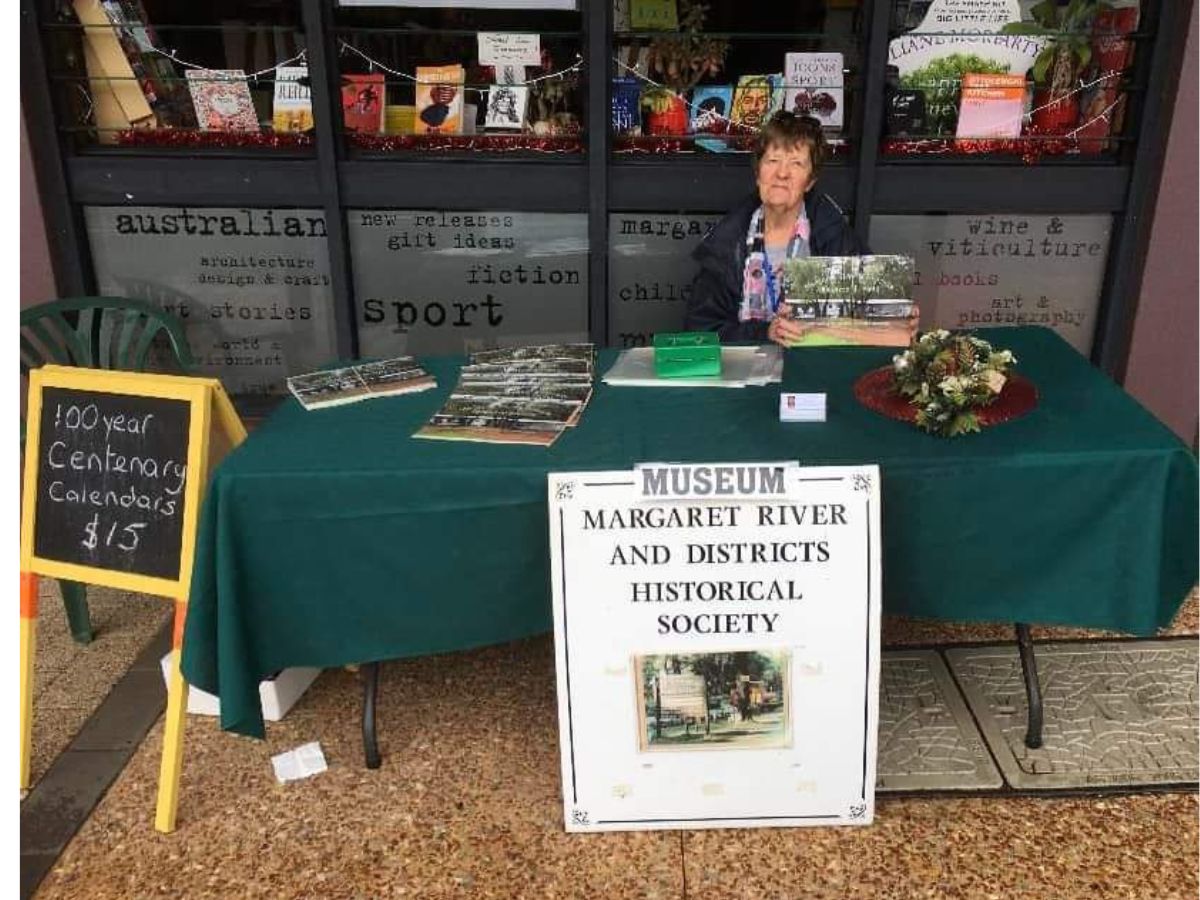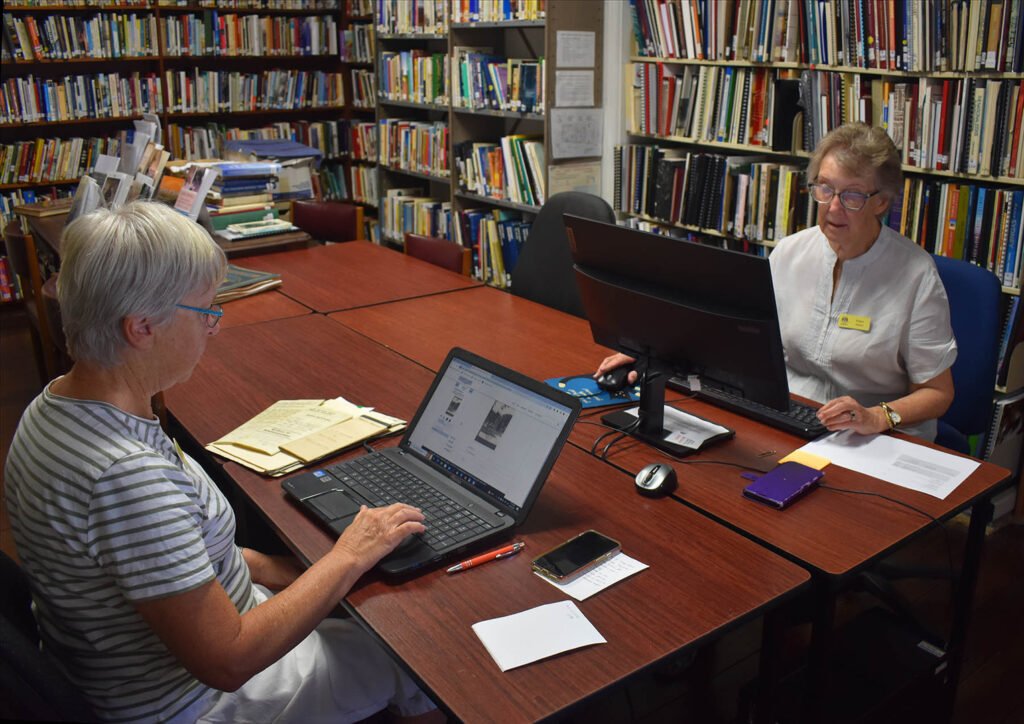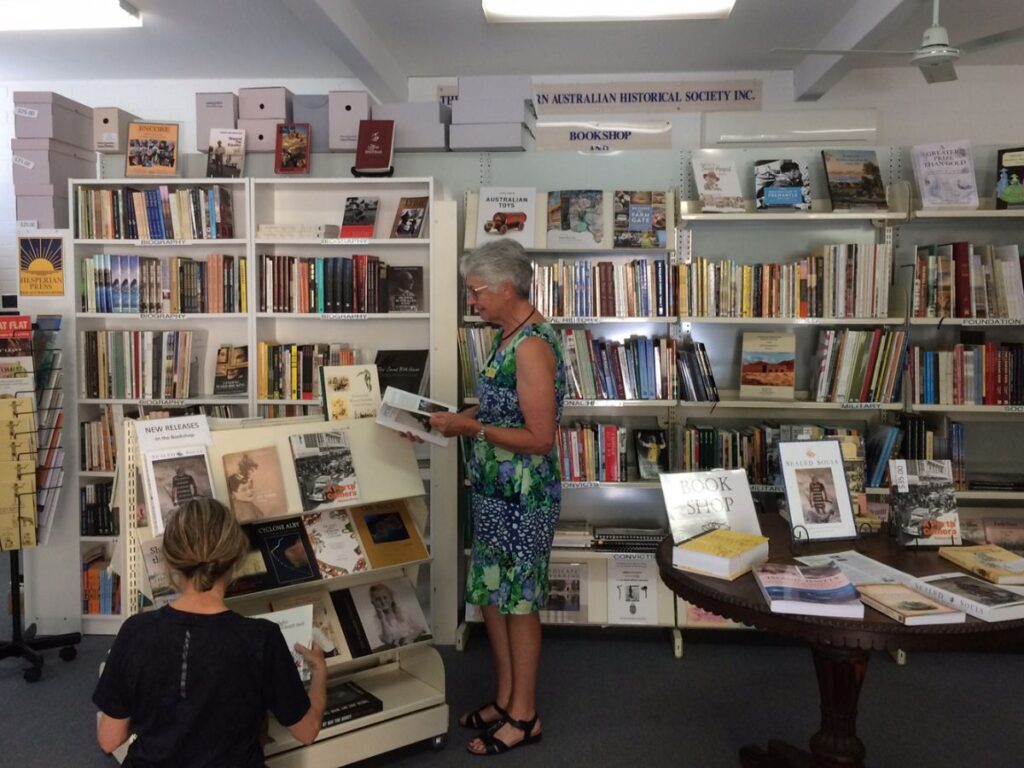Federation of Australian Historical Societies (Inc.) – general information
The Federation was established in 1977, has eight constituent members, one in each state and territory, and is the national peak body representing the interests of about 1,000 historical societies and approaching 100,000 members throughout Australia. The constituent member organisations are:
- Canberra and District Historical Society (Inc.)
- Historical Society of the Northern Territory (inc.)
- History South Australia
- Royal Australian Historical Society (Inc.)
- Royal Historical Society of Queensland (Inc.)
- Royal Historical Society of Victoria (Inc.)
- Royal Western Australian Historical Society (Inc.)
- Tasmanian Historical Research Association (Inc.)
Refer to the Federation of Australian Historical Societies’ website home page for links to these organisations.
The Federation communicates with governments and public officials to inform them about issues affecting historical societies and museums, and to advocate the interests of historical societies and museums.
The Federation provides, via the “Support” drop-down menu on its website, access to a variety of online guides and training materials to assist historical societies, including its guides to:
- heritage identification and protection (formerly FAHS Heritage Handbook)
- heritage tourism Cultural landscapes
- how to publish historical materials (Publishing History).
- disaster planning and recovery
The Federation publishes a bi-annual Newsletter and a monthly E-bulletin. These publications are distributed to historical societies across Australia. You are encouraged to distribute them to all your members who have internet access. If you are not receiving them please contact the Federation (E-mail: admin@history.org.au; Ph: 02 6295 2837;
Post:GPO Box 1440, Canberra ACT 2601, Australia).
Messages from Federation of Australian Historical Societies to all historical societies
Two national surveys were conducted by the Federation relating to historical societies’ general situation and their collections. The results of these surveys have now been posted on the Federation’s website. The following links will take you there:
General situation:
https://www.history.org.au/wp-content/uploads/2018/11/FAHS-Survey-of-Historical-Societies.pdf
Collections Management
https://www.history.org.au/wp-content/uploads/2018/11/FAHS-Survey-of-Historical-Societies-2.pdf
FAHS is a partner of Blue Shield Australia: This is an international network seeking to protect the world’s cultural heritage threatened by armed conflict and natural disasters. For further information contact Blue Shield Australia at https://blueshieldaustralia.org.au
Local History and Schools’ Curriculum is a Federation of Australian Historical Societies guidelines project designed to assist local historical societies connect with the teachers and students at schools in their areas.
Ann Parry, a professional schools’ curriculum designer based in the ACT, was contracted by the FAHS to construct the guidelines. During her three years’ research Ann Parry visited local societies in Queensland, Western Australia, Victoria, New South Wales and Tasmania. She addressed teachers at professional conferences and conducted questionnaires to gather their experience and opinions. Ann also addressed the Royal Australian Historical Society annual conference and presented at the FAHS October Meeting in Melbourne.
The Local History and Schools’ Curriculum guidelines connect the schools’ curriculum with resources available in local historical societies, include valuable suggestions about how they may be used by teachers and societies and provide pathways beyond traditional approaches. The guidelines are an invaluable and unique resource which we hope will encourage liaison between schools and local historical societies, to the enhancement of both.
The curriculum guide was initiated, managed and edited by Esther Davies, Canberra & District Historical Society delegate and Vice President, FAHS and Julia Ryan, President, Canberra & District Historical Society and delegate to FAHS and is available at https://www.history.org.au/wp-content/uploads/2018/12/Local-History-and-Schools-Curriculum-FAHS.pdf
Help for those interested in writing history
An interesting new book has been published by the Royal Historical Society of Victoria – Writing and Publishing Local History: A Guide for First-time Authors and Historical Societies, authored by Rosalie Triolo, Helen Doyle and Katya Johanson. The RHSV recognised that there is widespread community enthusiasm for local histories, but few people have the relevant knowledge to make their research readily available in a permanent form. Writing and Publishing Local History provides step-by-step advice from preliminary planning to final publication. The book can be ordered from the RHSV Bookshop or downloaded free at http://www.historyvictoria.org.au/wp-content/uploads/2017/10/WritingandPublishingLocalHistory.pdf
Digital Access to Collections Toolkit (GLAM – Galleries, Libraries, Archives and Museums)
This new guide provides practical steps for volunteers and staff in small to medium organisations in Australia that are collecting digital items, undertaking digitisation, and providing online access to their collections.
For access to this toolkit go to http://www.digitalcollections.org.au/toolkit and follow the links.

A valuable NSW initiative
The Pathfinders – the History of NSW Aboriginal Tracker’ is being developed by Michael Bennett, historian for Native Title Services Corp. The website (http://pathfindersnsw.org.au) provides an overview of the history of NSW trackers from 1862 when the current NSW Police Force was established, through to 1973 when the last tracker retired. There is also a timeline and information on the lives of individual trackers, including details on the police stations where they worked and lived, as well as the traditional language groups to which some of the trackers belonged. ‘A good tracker could pick up the smallest change in the landscape and quickly work out in which direction a person or animal was moving’. Here is a NSW project well worth copying!




